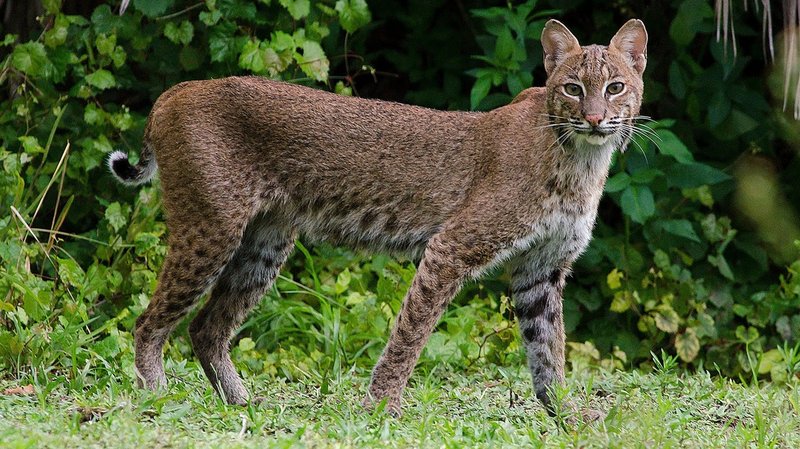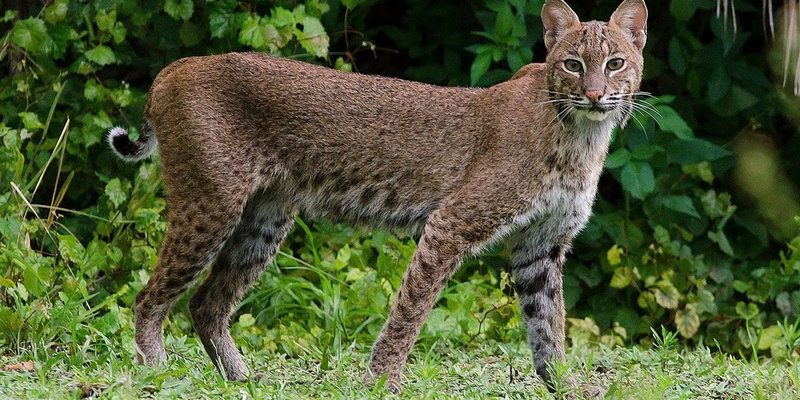
The bobcat, known scientifically as *Lynx rufus*, is a member of the Felidae family, which also includes bigger cats like lions and tigers. But unlike those big cats, bobcats are often found in a wider range of environments, from forests to deserts. Their adaptability is a key part of their evolutionary success. So, let’s dive into the rich evolutionary history of the bobcat, exploring how they came to be the agile predators we see today.
Where It All Began: The Origins of the Bobcat
To understand the bobcat’s history, we first need to look deep into the past. *Lynx rufus* is believed to have diverged from a common ancestor shared with other lynx species about 2 to 3 million years ago during the Pleistocene epoch. This was a time when the Earth was moving in and out of ice ages, shaping landscapes and influencing how species evolved.
The Pleistocene epoch was a wild time, with large mammals like woolly mammoths and saber-toothed cats roaming the Earth. Bobcats adapted to this shifting environment, evolving traits that would help them survive. They developed a unique combination of size, agility, and hunting skills that made them efficient predators. Imagine having to outsmart larger, more dangerous competitors while finding enough food; bobcats mastered that art.
As the climate changed and landscapes transformed, bobcats spread across North America. Fossils suggest they occupied a vast territory, adapting to new conditions wherever they went. This adaptability is one of the reasons we see them thriving today—not just surviving but flourishing in diverse habitats.
The Appearance and Characteristics of Bobcats
Now, let’s talk about what makes bobcats, well, *bobcats*! They’re known for their distinctive appearance, which can vary significantly depending on where they live. Bobcats typically weigh between 15 to 35 pounds and have a tufted tail that’s only a few inches long. This unique tail is a hallmark feature, providing them with the name “bobcat.”
Their fur is generally spotted, offering excellent camouflage in the wild. This helps them hunt effectively, blending seamlessly into their surroundings. Whether they’re prowling through dense forests or navigating the underbrush of a desert, their spotted coat allows them to stay hidden from both prey and predators.
But here’s the thing: it’s not just their looks that make them special. Bobcats are incredibly agile and can leap up to 10 feet in a single bound. This capability gives them an edge when hunting small mammals like rabbits and rodents. Imagine stalking your dinner and then suddenly springing into action—bobcats do it effortlessly!
Bobcats and Their Habitat: A Diverse Range
Bobcats are true survivors, adapting to a variety of habitats across North America. You might find them in forests, swamps, mountains, and even suburbs. Their ability to thrive in such diverse environments speaks volumes about their evolutionary success.
In forests, bobcats often hunt in thick underbrush, using their camouflaged fur to remain unseen. They’re solitary animals, which means they prefer to hunt alone. This solitary nature helps them defend their territory against other bobcats, as well as larger predators.
In more urban settings, bobcats have adapted quite well. You might not expect to see a wild cat trotting through a suburban backyard, but many folks are surprised when they spot one! Bobcats have learned to navigate human environments effectively, often finding food sources such as small pets or rodents.
Diet and Hunting Strategies
If you’re curious about what bobcats like to eat, you’re in for a treat—figuratively, of course! Bobcats are carnivores, primarily hunting small mammals. Their diet mainly consists of:
- Rabbits
- Squirrels
- Birds
- Rodents
- Occasionally, even deer!
Their hunting strategy is fascinating. Bobcats often use a stalk-and-pounce technique. Picture them crouched low, slowly inching forward, waiting patiently for the right moment to strike. They rely heavily on their keen eyesight and hearing to pick up on the movements of their prey.
Once they spot a potential meal, they spring into action, using their powerful hind legs to leap toward it. This method of hunting ensures they can catch food efficiently, especially when targeting agile prey like rabbits. It’s a thrilling chase that showcases their agility and predatory skills.
Reproduction and Life Cycle of Bobcats
Like all species, the bobcat’s reproduction process plays a crucial role in its evolutionary story. Bobcats reach sexual maturity around one year of age. Mating usually occurs between February and March, with females giving birth to one to six kittens after a gestation period of about 60 to 70 days.
Kittens are born blind and rely on their mother for everything in those early weeks. They begin to open their eyes around two weeks old, and by about six months, they start to learn how to hunt. Watching them grow up is like watching a mini version of their parents—full of energy and playful antics.
Once they reach about a year old, the young bobcats become adults and venture out on their own to establish their territories. This process not only helps prevent inbreeding but also ensures that the population remains healthy and diverse.
Conservation Status: Challenges and Successes
Despite their adaptability, bobcats face various threats in the wild today. Habitat loss due to urban development and agriculture has impacted their populations significantly. They tend to be especially vulnerable when their natural habitats are fragmented.
However, here’s the good news: bobcats are currently classified as Least Concern by the IUCN, meaning their populations are generally stable across much of their range. Conservation efforts have focused on habitat preservation and educating the public about coexisting with these amazing creatures.
Some states have implemented hunting regulations to protect bobcat populations, allowing them to thrive even in areas with human activity. Considering their evolutionary history, it’s heartening to see that efforts are being made to ensure these remarkable cats continue to roam the landscape.
The Bobcat Today: A Success Story of Adaptation
In the grand tapestry of nature, the bobcat stands out as a symbol of resilience and adaptability. Its evolutionary journey—from ancient ancestors to modern-day hunters—illustrates the incredible ability of species to thrive amidst changing environments.
Bobcats have become a common sight in many areas, demonstrating that wildlife can coexist with humans if given the chance. They remind us of the importance of preserving natural habitats and understanding the delicate balance of our ecosystems.
So, the next time you hear a rustle in the bushes or catch a glimpse of a feline form darting through the underbrush, remember the journey that brought the bobcat to where it is today. Their story is one of survival, adaptation, and the ongoing quest for balance in a world that’s always changing.
In a way, bobcats are like the quiet, skilled hunters of the wild—always there, often unnoticed, but an essential part of the natural rhythm of life.

